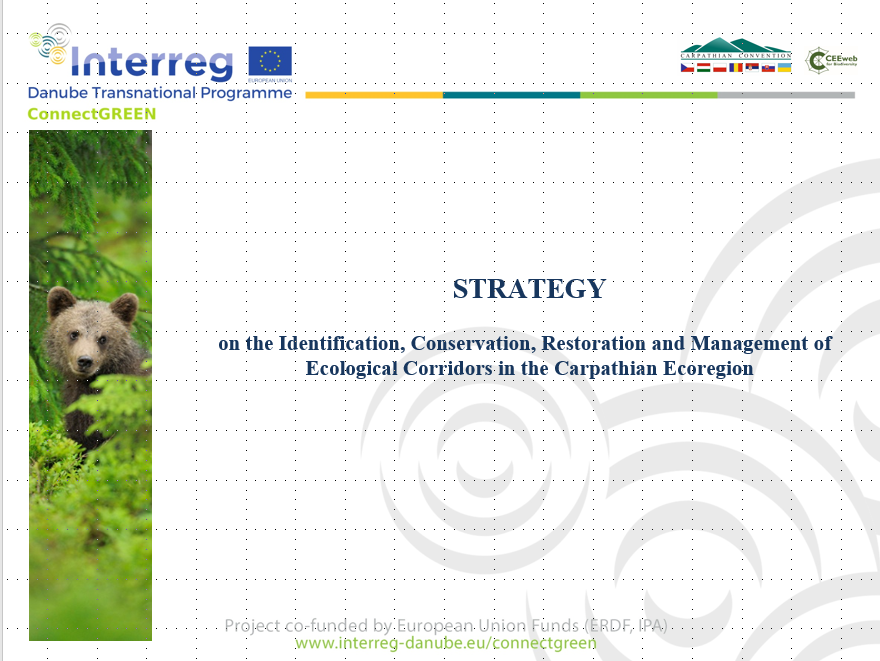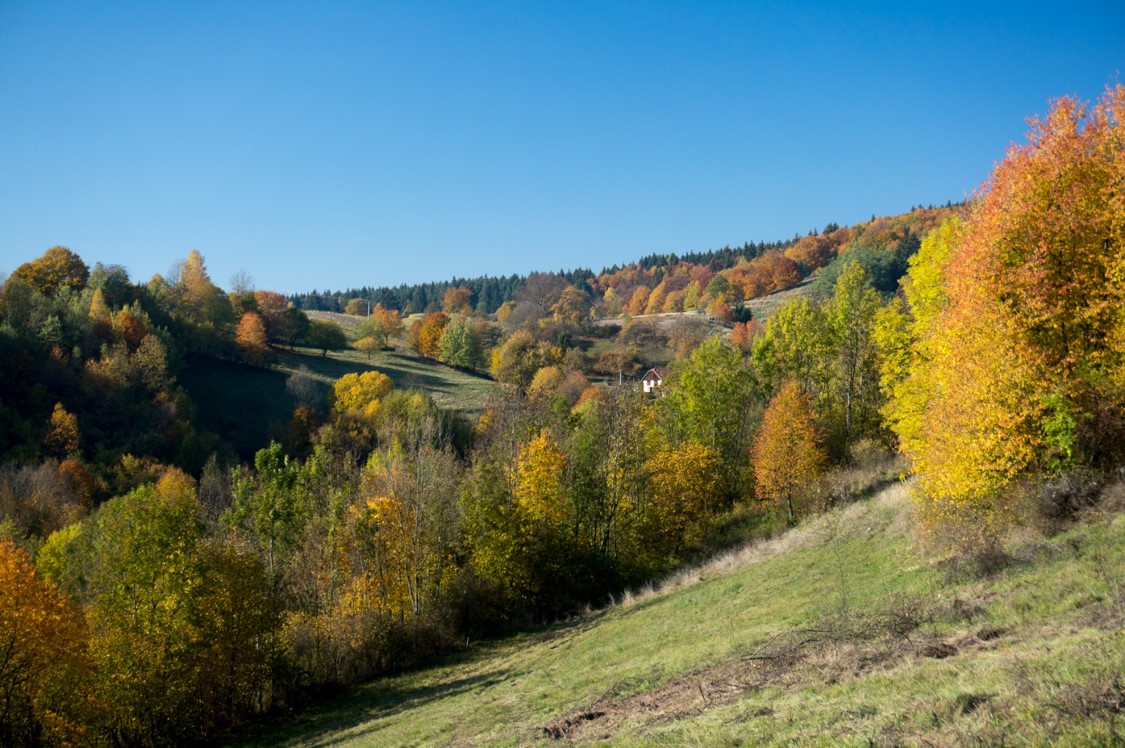ConnectGREEN - Coping with the times: the Carpathian Convention went online for its latest meeting
13-03-2020
March 10-11, 2020. Virtual world
In light of the current COVID-19 pandemic, the precautionary principle was applied as the members of the Carpathian Convention Working Groups on Biodiversity and Sustainable Transport, and of the Steering Committee of the Carpathian Network of Protected Areas (CNPA), as well as observers from scientific institutions and NGOs, shifted the planned line of action and gathered online on a 2-day event on 10-11 March.
This first online meeting, organised by CEEweb for Biodiversity with the help of WWF CEE, took place within the frame of the ConnectGREEN project and served to push forth critical discussions related to the International Action Plan for the Conservation and Sustainable Management of the Carpathian Large Carnivores Population, as well as to the Strategy on the Identification, Conservation, Restoration, and Management of Ecological Corridors in the Carpathian Ecoregion.
On the former, Ms Klaudia Kuraś, from the Secretariat of the Carpathian Convention, presented the advanced version of the action plan, commencing the process of feedback collection to be integrated to the final version. Along with other project results — such as from the LIFE EuroLargeCarnivore project — the ConnectGREEN results and deliverables seek to contribute to the implementation of the action plan, whose adoption is expected to occur during the 6th Meeting of the Conference of the Parties (COP6) to the Carpathian Convention, scheduled for September 2020.
 On the latter, Dr. Nagy Gabriella Mária, from CEEweb for Biodiversity and the ConnectGREEN project, further elaborated on its contents, meant to provide a consolidated guidance on how to cover ecological corridors in the new national Post-2020 biodiversity strategies. Moreover, the strategy for ecological corridors in the Carpathian ecoregion aims to support the mainstreaming of biodiversity including green infrastructure into the economic sector. The revised draft strategy — the initial version of which had been introduced during the 10th Meeting of the Carpathian Convention Biodiversity Working Group, held in Colțesti, Romania, on 25-28 November 2019 — was accepted by the Parties, noting the intention to start detailed commenting in the written version.
On the latter, Dr. Nagy Gabriella Mária, from CEEweb for Biodiversity and the ConnectGREEN project, further elaborated on its contents, meant to provide a consolidated guidance on how to cover ecological corridors in the new national Post-2020 biodiversity strategies. Moreover, the strategy for ecological corridors in the Carpathian ecoregion aims to support the mainstreaming of biodiversity including green infrastructure into the economic sector. The revised draft strategy — the initial version of which had been introduced during the 10th Meeting of the Carpathian Convention Biodiversity Working Group, held in Colțesti, Romania, on 25-28 November 2019 — was accepted by the Parties, noting the intention to start detailed commenting in the written version.
CARPATHIAN PATHS
Within a fully online context, both a sense of novelty and analysis on this kind of meeting helped realise the capacities of a teleconference approach to international meetings. In times of rising travel bans, coping with regulations has the positive result of a much-needed reduction in carbon emissions. Most certainly, some types of discussions do require, a physical presence in many instances, but the overall possibility of a mixture of online and personal meetings for the future became an interesting, green topic of conversation.
Beyond that, during the second day of the online meeting, on 11 March, the members of the Carpathian Convention Working Groups on Biodiversity and Sustainable Transport discussed the advanced version of the Joint Strategic Action Plan 2021 – 2026 for the implementation of the Protocol on Sustainable Transport — aiming to develop the final version for its adoption during the COP6.. The Interreg DTP TRANSGREEN Project and its partners, in cooperation with Eurac Research, facilitated the development process between 2017 and 2019. It is the first cross-sectoral Action Plan calling for cooperative work between the fields of transport and nature conservation.

Moreover, further news came onto the table — or rather the screen. Isidoro de Bortoli, from Eurac Research (Italy) gave an update on the Interreg Central Europe Project Centralparks, which is a partner project of ConnectGREEN. The project aims at improving biodiversity and landscape conservation measures in and outside of Carpathian protected areas. The synergy coming from both projects will result in the organisation of the Carpathian Protected Areas Conference, to be held in Visegrad, Hungary, on 20-22 April 2021. Prior to this, in November 2020, Centralparks will organise a Round Table together with the CNPA Steering Committee to support its preparation.
Furthermore, the Secretariat of the Carpathian Convention and WWF CEE will present the Convention, ConnectGREEN and the Carpathian Network of Protected Areas in different events during the IUCN World Congress, to be held in Marseilles, France, on 12-19 June 2020. The Congress, which will bring together the world’s leading conservation and sustainable development, represents the largest marketplace for nature conservation and sustainable development science, practice and policy, and is expected to bring together over 10 000 people.
The meeting closed with the wish to continue discussions on the updated versions of the three policy documents in the near future, so as to present them to the Carpathian Convention Implementation Committee for their final approval in June this year.
ABOUT THE CARPATHIAN CONVENTION
The Carpathian Convention is actively involved in the preparation of the Post-2020 Biodiversity Strategy, currently being developed under the lead of the Convention on Biological Diversity (CBD).
The Carpathian Convention is seen as a sub-regional framework for the implementation of the CBD for many years. Now, in light of the coming post-2020 global biodiversity framework, the Carpathian Convention shall become a leading example of a regional instrument for implementation of the new framework — especially in Europe — translating global targets and goals to the regional level.
The Carpathian Convention represents a model of mainstreaming biodiversity into policy across borders, and highlights the importance of mountain biodiversity.

